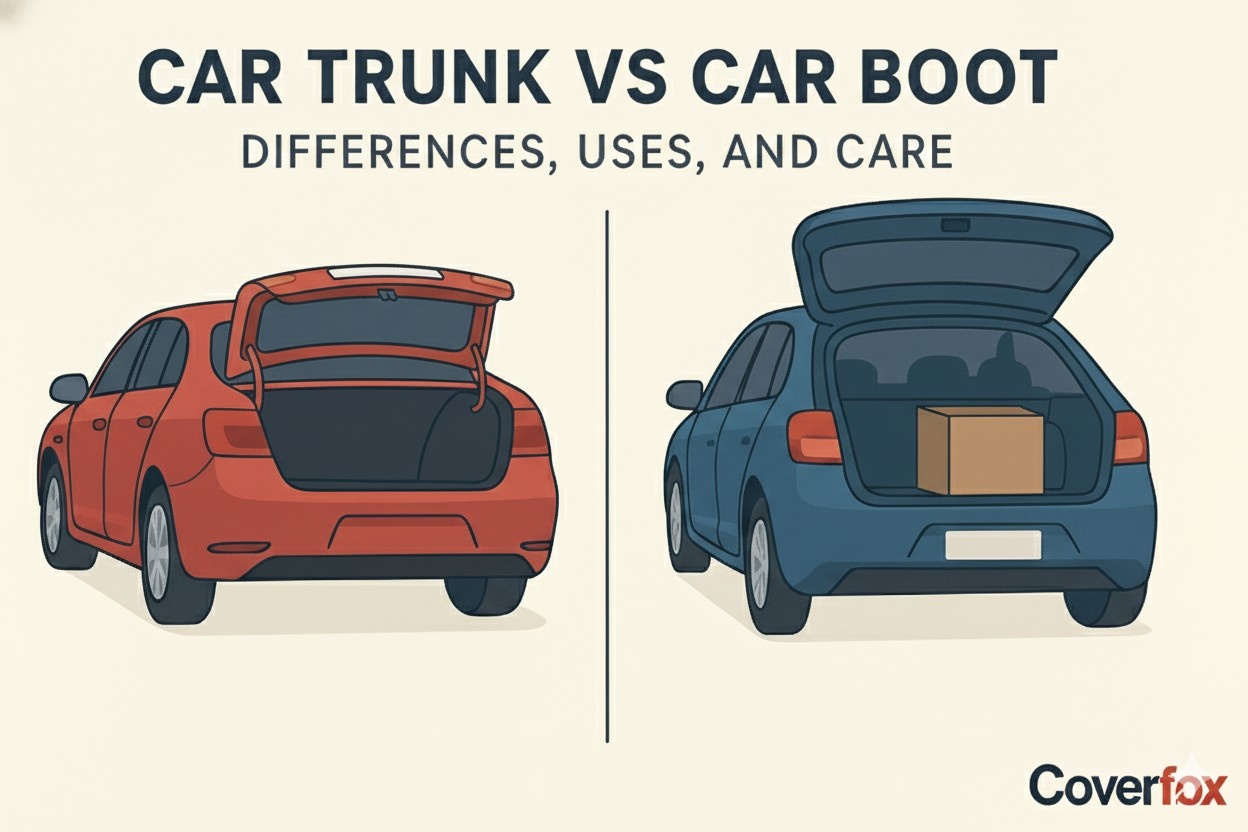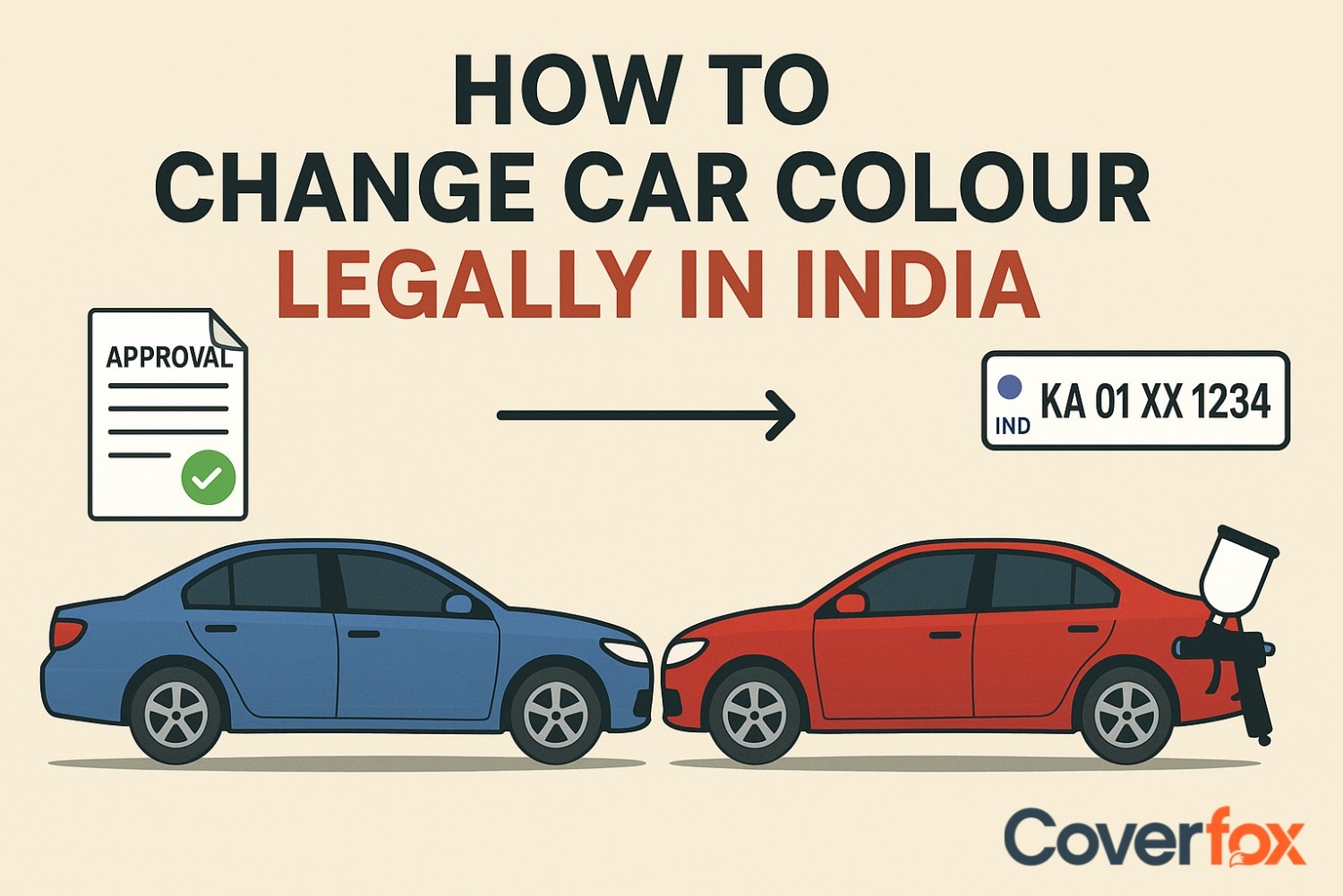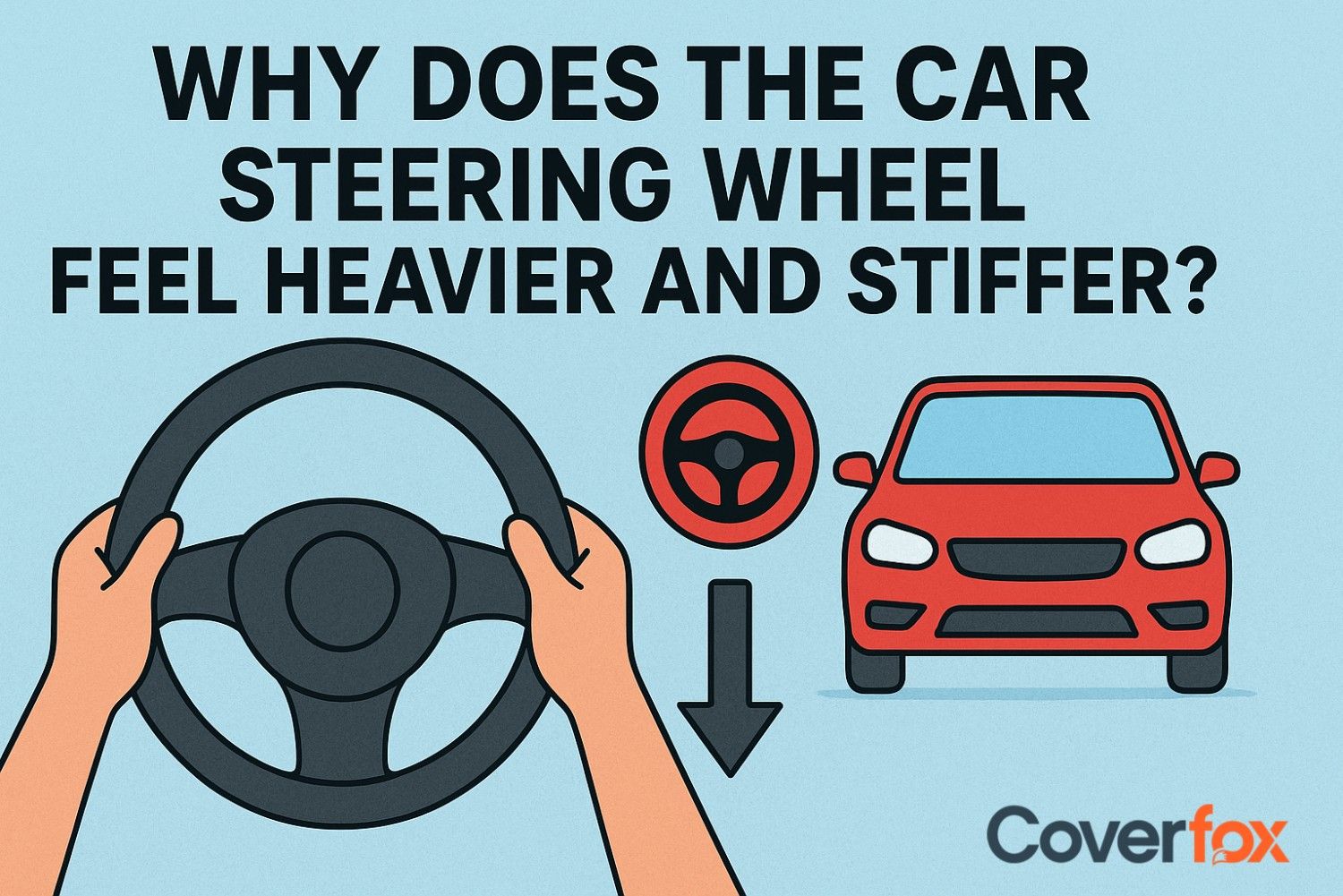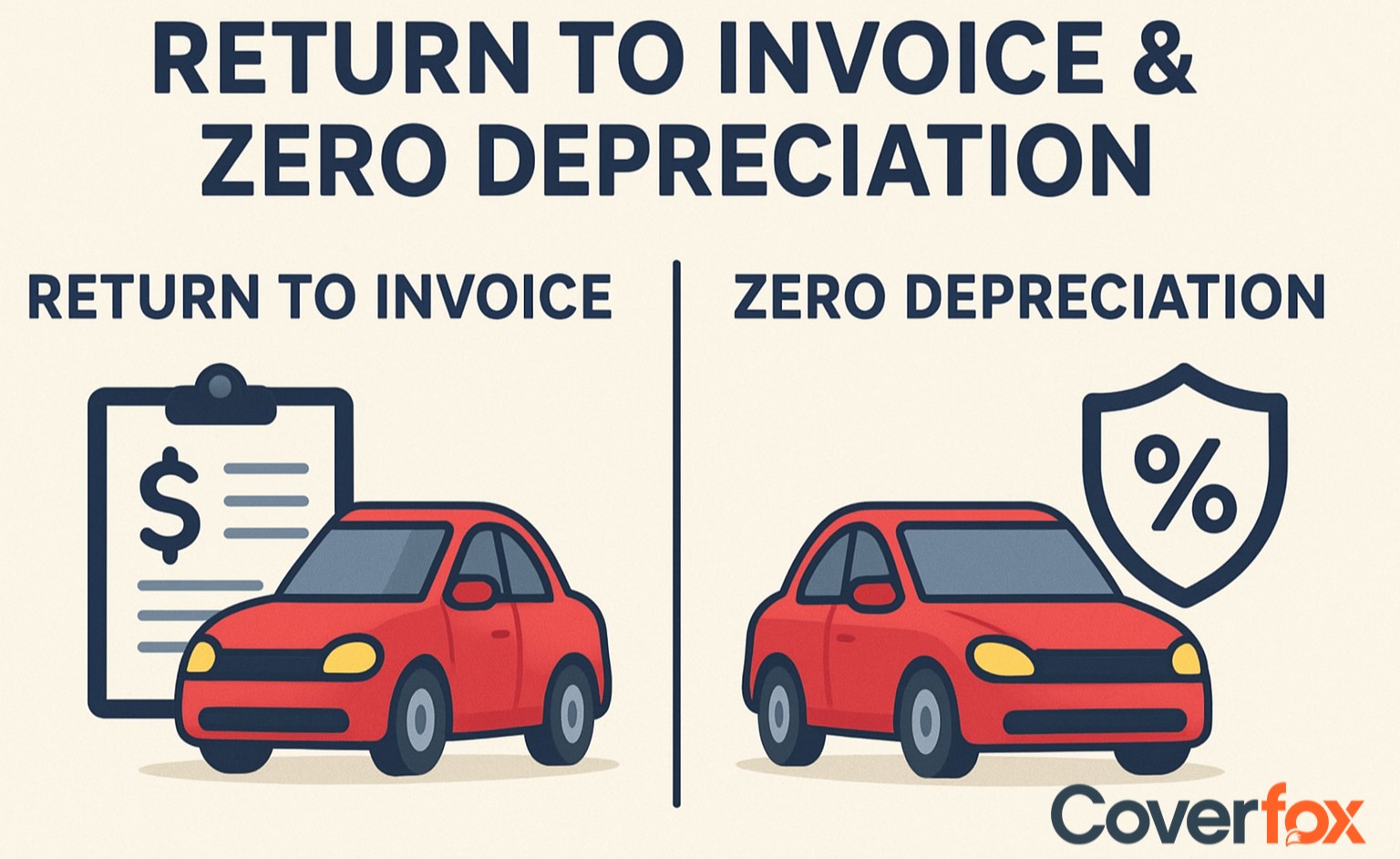Ever wondered what the space at the rear end of your car is called? In some regions, it is known as a car boot, while in others, it is referred to as a car trunk. On the other hand, in countries like India, it is often referred to as “car dicky” or even “dikki”. To put it simply, the term for this storage space varies depending on which region you belong to.

To help clarify the main differences between a car trunk and boot, this article will simplify their definitions, along with explaining their uses, history, care, and role in car insurance.
Are Car Trunk and Car Boot the Same?
Yes, a car trunk and boot refer to the same part of the car. This is the rear end of the vehicle, which is an enclosed and secure storage space to keep various items like luggage, groceries, tools, etc. In America, it is referred to as a car trunk, while in the U.K. and other British English-speaking nations, it is referred to as a car boot.
History of the Car Trunk or Car Boot
So, how did these two terms originate? Find out their history here:
Car Trunk
Car Boot
The term ‘trunk’ originated in America in the late 19th or early 20th century, when automobiles were not as enclosed as they are today. Luggage was stored in external compartments at the back of the automobile, such as a travel trunk or chest.
Similarly, the term ‘boot’ originated in England in the early 20th century to resemble the coachmen placing their boots in small compartments in horse-drawn carriages.
Main Differences Between Car Trunk and Car Boot
While they are used for the same purpose, there is a slight difference between the two that you should be aware of. The table below helps highlight these very differences:
| Feature | Car Trunk (U.S.) | Car Boot (Europe/Commonwealth) |
|---|---|---|
| Terminology | Called "trunk" in the United States | Called "boot" in European countries |
| Size | Usually larger in American cars | Usually smaller in European cars |
| Security | Locking system for more security | Some models may not have locks |
| Storage Design | Designed for luggage and tools | Designed for lighter items like groceries |
| Usage Purpose | Used for high-value belongings | Used for everyday or low-value items |
| Regional Preference | Mostly used in the U.S. | Commonly used in the U.K. & Commonwealth nations |
Key Benefits of Having a Car Trunk or Boot
There are multiple features offered by a car trunk or boot. These are:
Keeps Things Safe
Easy Storage
Offers Good Aesthetics
Balances the Car
Hold Emergency Tools
Good for Outdoor Gear
Reduces Noise
Extra Safety
More Space When Needed
Emergency Exit
The trunk locks securely to protect your belongings from theft.
It is a convenient storage space for carrying bags, luggage, and groceries during trips.
A neat trunk design makes the car look stylish, especially in sedans.
A car boot helps spread the weight evenly, making driving smoother and safer.
You can store a spare tyre, jack, and jumper cables for roadside help or sudden emergencies.
In case you are heading on outdoor trips like camping, hiking, or fishing, it helps carry the required equipment with ease.
The closed trunk helps block sounds from luggage, keeping the cabin quiet.
Many trunks have inside release levers or extra locks for more security.
With the option of foldable seats, it becomes easy to maximise space by folding down the back seats to carry large items.
Some cars have an inside lever to open the trunk from inside during emergencies.
Uses of a Car Trunk or Boot
Curious to learn about the multiple ways a car boot or trunk is useful? Then here’s everything you need to know about it:
| Use | What It’s For |
|---|---|
| Luggage Storage | Carrying suitcases, backpacks, and travel bags on trips. |
| Grocery Shopping | Keeping groceries in place so they don’t roll or spill. |
| Carrying Cargo | Moving boxes, tools, sports items, and home goods. |
| Shopping Bags | Storing shopping purchases away from the seats. |
| Work Items | Taking tools or work equipment safely. |
| Outdoor Gear | Holding camping, hiking, or fishing items. |
| Emergency Kit | Keep first aid, jumper cables, and flashlights handy. |
| Pet Travel | Carrying pets in carriers or crates safely. |
| Moving House | Shifting small household things or extra items. |
| Spare Tyre | Storing a spare tyre for emergencies. |
| Event Items | Take picnic chairs, blankets, games, or party supplies. |
| Keeping Valuables Safe | Hiding important things when the car is parked. |
How to Take Care of Your Car Trunk or Car Boot?
To ensure long-term use, here are certain tips to keep your car's boot or trunk well taken care of:
Clean Regularly
Check for Leaks
Avoid Overloading
Maintain Weather Seals
Protect the Interior
Don’t Store Hazardous Items
Secure Heavy or Sharp Items
Keep Emergency Tools Nearby
Ensure Proper Locking
Remove dust, dirt, and spills often, make sure to wipe the interior and vacuum it to prevent bad smells or mould.
After rain or car washes, look for water inside the trunk. Fix leaks quickly to avoid damage.
Don’t exceed your car’s load limit. Too much weight can harm the hinges and locks.
Make sure the rubber seals are in good shape to keep out water, dust, and insects. Replace them if worn out.
Use mats, liners, or cargo trays to avoid scratches or stains and make cleaning easier.
Avoid keeping flammable or harmful materials in the trunk for safety reasons.
Use straps or covers to prevent objects from moving or damaging the trunk.
Store jacks, jumper cables, and spare tyres where you can reach them easily.
Always lock your trunk. If the latch or lock is faulty, get it repaired immediately to prevent theft.
Why Car Trunks and Boots Matter for Car Insurance?
While both ‘car trunk’ and ‘car boot’ are the same terms to refer to the storage space at the back of the car, it becomes important to mention the correct term while filing a car insurance claim. If you incorrectly describe this part while reporting damage, it can lead to confusion and further delay in the car insurance claim procedure. That is why, be clear about the term ‘trunk’ or ‘boot’, as this helps the insurer check the issue and decide the claim amount faster.
In Summary
In all, while a car trunk and boot refer to the same storage space at the rear end of a car, their terminology differs based on the region you live in. To ensure better use for the long term, it is necessary to maintain your car's trunk or boot properly. In addition to this, it is also vital to refer to the correct term while filing a car insurance claim to avoid any confusion.
Head over to Coverfox, which offers a dedicated claim support team for all your necessary queries, ensuring a smooth and hassle-free experience.
Also Read:
Boot Space in Cars: Why It Impacts Your Driving Experience
Leather Car Seats vs. Fabric Car Seats: Choosing the Right Interior for Your Car
A Complete Guide to Replace Your Car Key Battery
Frequently Asked Questions
What is the difference between a car trunk and a boot?
Both trunk and boot refer to the storage space at the rear end of a car. However, the terminology differs based on the region, as Americans refer to it as a ‘trunk’, while the British refer to it as a ‘boot’.
Why do different places call it a trunk or boot?
Both terms have a historical significance attached to them. ‘Trunks’ originated in America from the external compartments called trunks attached to automobiles, while ‘boots’ originated in England from horse-drawn carriages, where boots were stored.
Are there any real functional differences between trunk and boot?
In terms of function, a slight difference between the two is that American car trunks may be larger in size, while European boots may be smaller due to compact car sizes.
Which countries use the word ‘boot’?
The term ‘boot’ is commonly used in countries such as the U.K., Australia, New Zealand, and India.
Does car insurance cover damage to the trunk or boot?
Yes. A comprehensive car insurance policy can cover damage to the trunk or boot due to accidents, theft or fire.
How does knowing about trunk vs boot help with insurance claims?
While filing a claim, it is important to refer to the correct terminology of either a car trunk or boot with the insurer. This avoids confusion and ensures a smoother process.
What does the word ‘dickey’ mean?
In India, ‘car dickey’ or ‘car dicky’ is a common term used to refer to the rear-storage space of a car, instead of car boot or trunk.





